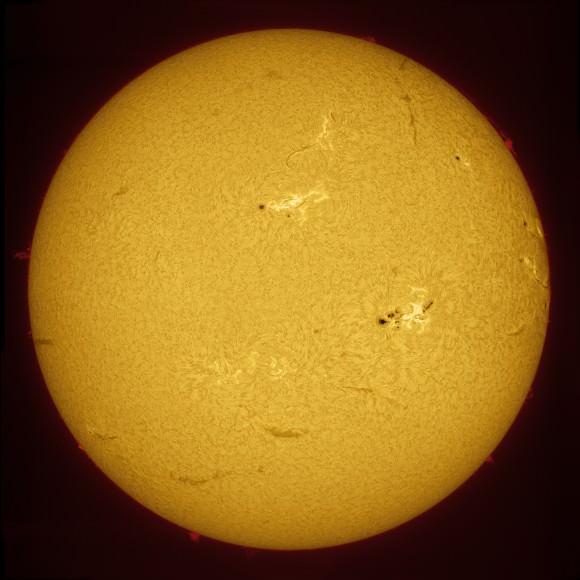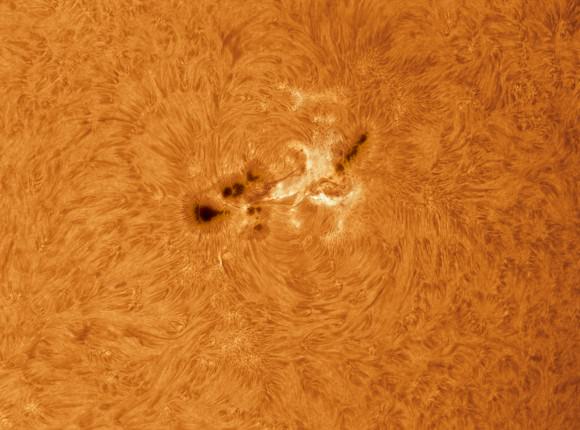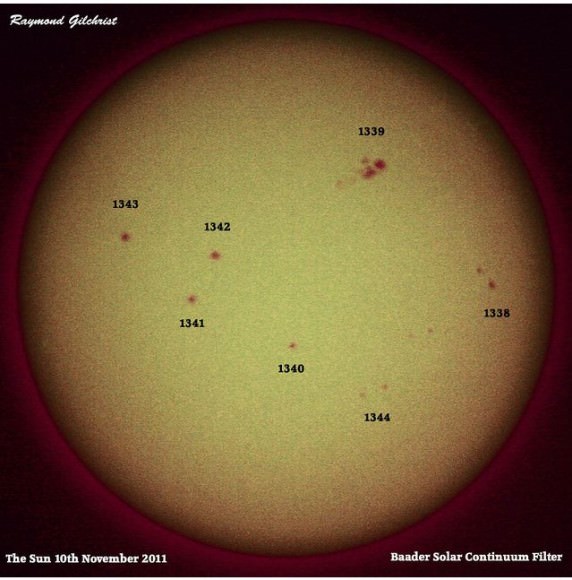
The full face of the Sun as seen on Nov. 6, 2011, showing AR 1339 and several other sunspots. Credit: Alan Friedman. Click for a stunning larger version.
What has been billed as the largest sunspot observed in several years has now rotated around to stare straight at Earth. How large is it? Active Region 1339 and the group of sunspots adjacent to it extends more than 100,000 km from end to end and each of the several dark cores is larger than Earth. The now very active Sun has already blasted out several medium- to large-sized solar flares and has the potential to hurl out more.
And the Sun is now dotted with several smaller sunspots as well. Above is an amazing image of all this activity, as captured by astrophotographer Alan Friedman. “This has been a glorious week for solar observers!” Friedman said. “Led by large sunspot region AR1339, the sun’s disk is alive with activity… the most dynamic show in many years.”
Take a look below for an incredible closeup of AR1339 taken by Friedman, as well as a movie from the Solar Dynamics Observatory showing the sunspots rotating into view.
Click on the image for a larger version on Friedman’s website, AvertedImagination.com
From all this activity, there may be a good chance for viewing aurorae. On November 9 at around 1330 UT, a magnetic filament in the vicinity of sunspot complex 1342-1343 erupted, producing a M1-class solar flare and hurling a CME into space, which will probably deliver a glancing blow to Earth’s magnetic field on Nov 11 or 12, according to SpaceWeather.com

A portrait of Active Region 1339 in the wavelength of hydrogen alpha light showing the large sunspot group and the maelstrom of chromosphere that surrounds it. Credit Alan Friedman
And here’s an image from astrophotographer Raymond Gilchrist showing a labeled version of all the current sunspots: 1338, 1339, 1340, 1341, 1342, 1343, 1344.
Raymond used a Baader Solar Continuum Filter and Thousand Oaks Full Solar Filter with a Skywatcher 120mm S/T Refractor,
with a Canon 350D, 1/15th Sec Exp. at ISO400. You can see more of his images at his Flickr page.
with a Canon 350D, 1/15th Sec Exp. at ISO400. You can see more of his images at his Flickr page.
Source: Universe Today

No hay comentarios:
Publicar un comentario